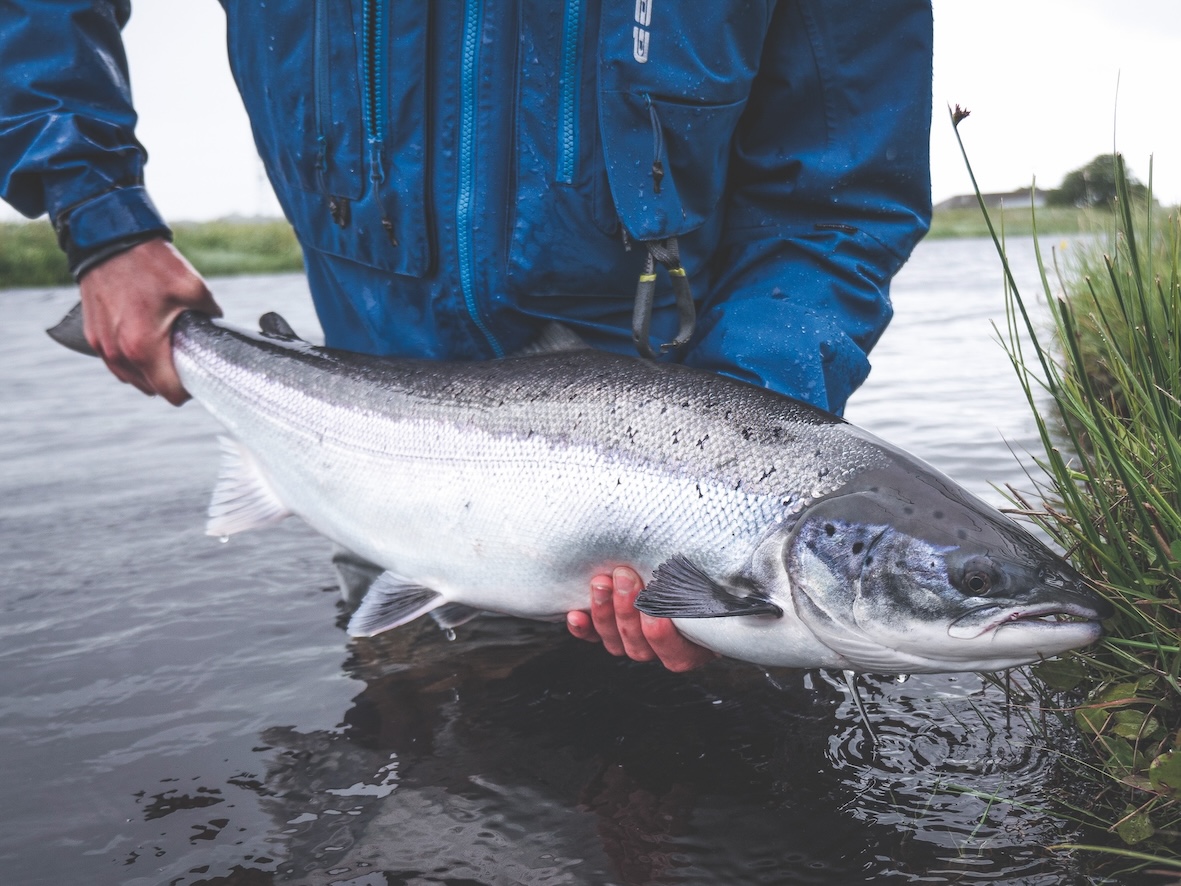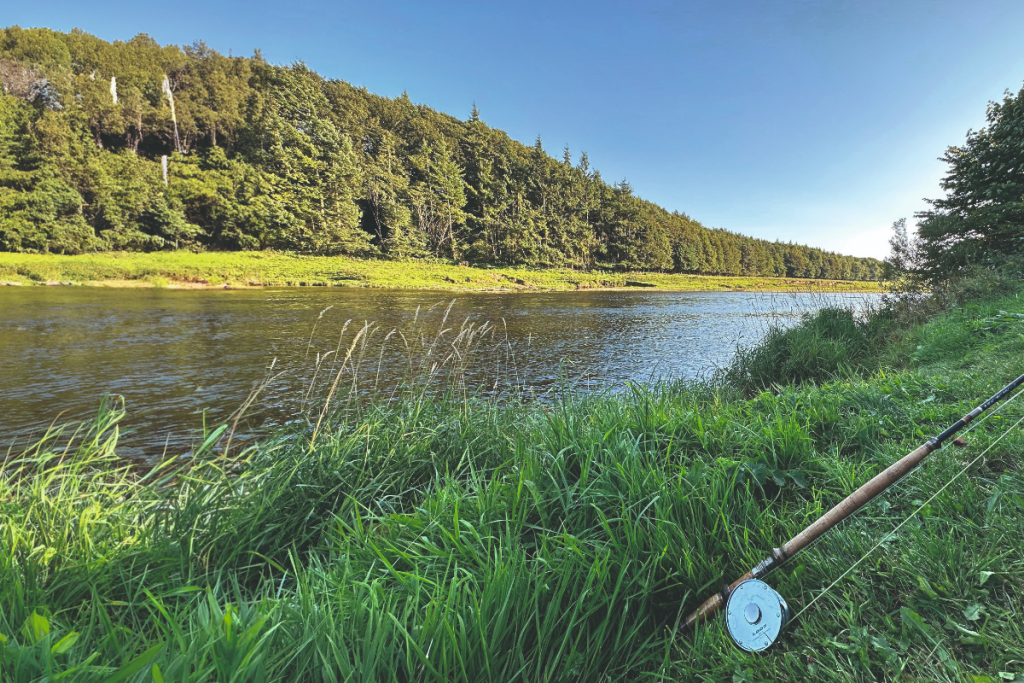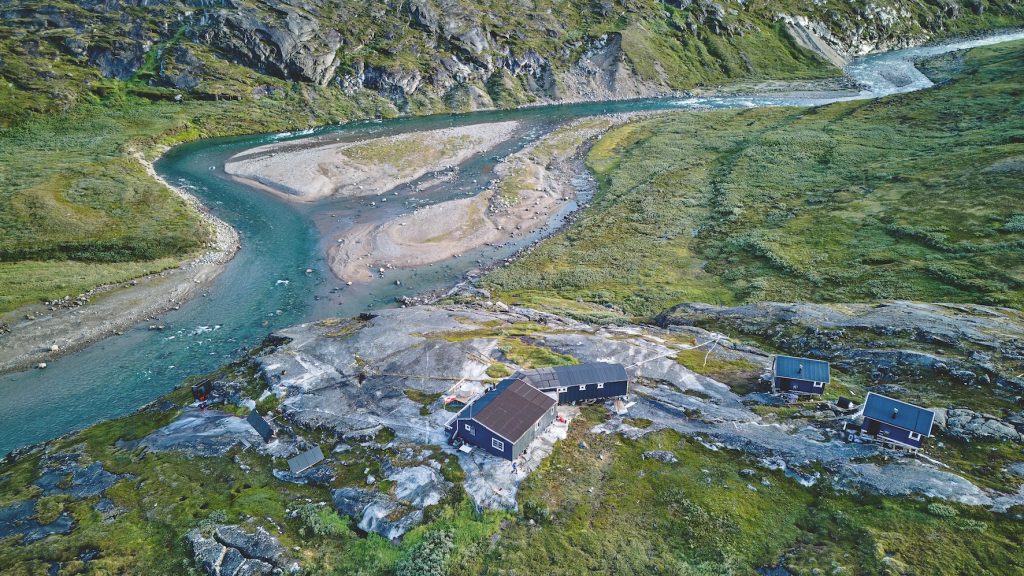Slow with the flow
Alastair Peake enjoys a stunning week’s salmon sport on the river Thurso in northern Scotland’s Flow Country.
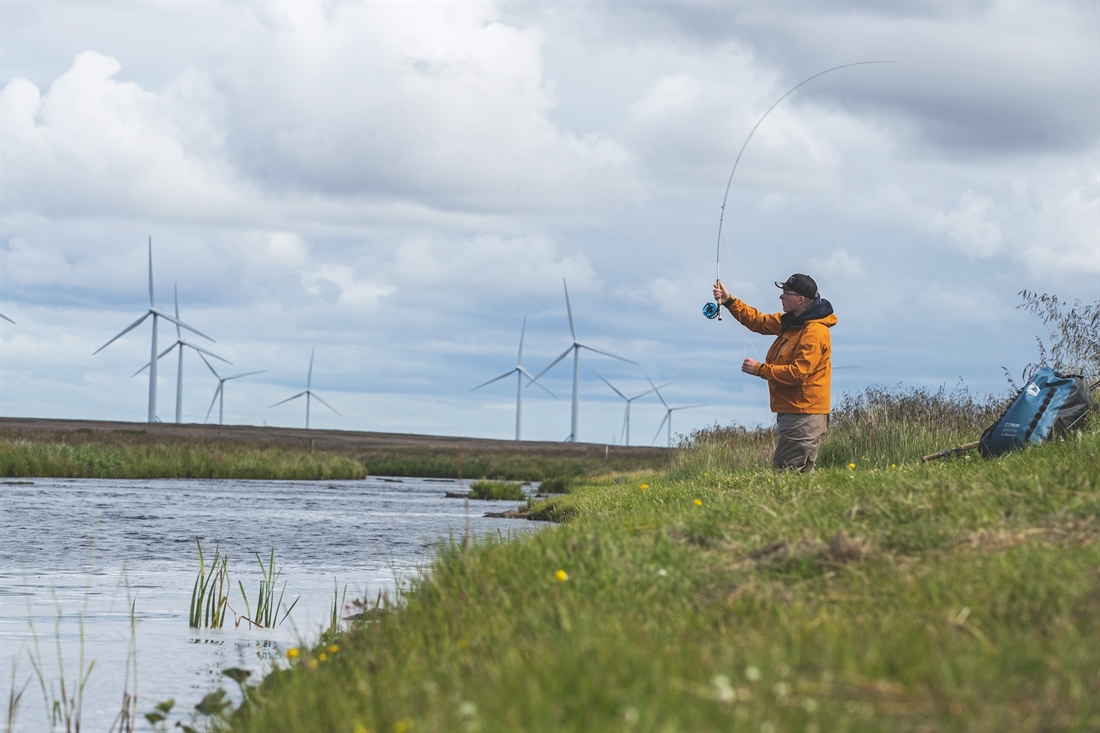
Last July, I joined my brother Will, Blaine Lyon, and William and Duncan Laird for a week’s fishing on the famous River Thurso. It was my first time fishing the Thurso, though I’d heard much about it from my friend Ross Macdonald, who often regaled me with tales of unbelievable days spent there with his father, Kenny. Many of Ross’s flies are inspired by the fruitful casts he’s made along the north coast of Scotland. Some anglers had described the Thurso as a slow-flowing river, almost canal-like in places, making it difficult to read and fish. Not knowing what to expect, I kept an open mind.
The north of Scotland is home to many fabled rivers, and as we left Aberdeenshire, passing Inverness, we crossed the Kyle of Sutherland—home to the mighty Oykel, Shin, Cassley, and Carron rivers—followed by the Brora and Helmsdale. I could easily have spent a month fishing my way north. As we neared our destination, the landscape changed as we entered the Flow Country, crossing the Berriedale and Langwell rivers before reaching the picturesque town of Halkirk and our accommodation for the week—the charming Ulbster Arms Hotel.
The Thurso’s Beat System
The Thurso is divided into 12 beats, with two rods allocated to each. Each day, rods move two beats downstream, allowing anglers to experience the upper, middle, and lower sections of the river over the course of a week.
The lower river—beats 4 to 2—offers streamy runs and dreamy pools perfect for fishing surface patterns. When the grilse are running, they fill every nook and cranny, and it’s astonishing how many fish can be caught in unexpected places.
The upper river has a unique character. Its beats and pools constantly shift, requiring anglers to adapt to changing weather conditions and water levels. On Beat 13, just below the dam, narrow, deep pools hold early spring fish awaiting a spate to run up into Loch Mor. I particularly enjoyed drifting along the banks of Loch Beg and fishing the prolific pools in Beats 9 and 8.
The Thurso gillies are intimately familiar with the river and ensured we were well-prepared, offering advice on the best ways to fish each pool. Head gillie Geordie Doull is especially enthusiastic, and there was a vibrant atmosphere in the gillies’ room at the hotel each morning as we prepared for the day ahead.
Access to most of the pools is easy, with well-placed car parks and vehicle access along much of the beat. Fishing was almost exclusively from the bank or at ankle depth, although chest waders allowed me to wade across some pools to fish them from the optimal side.
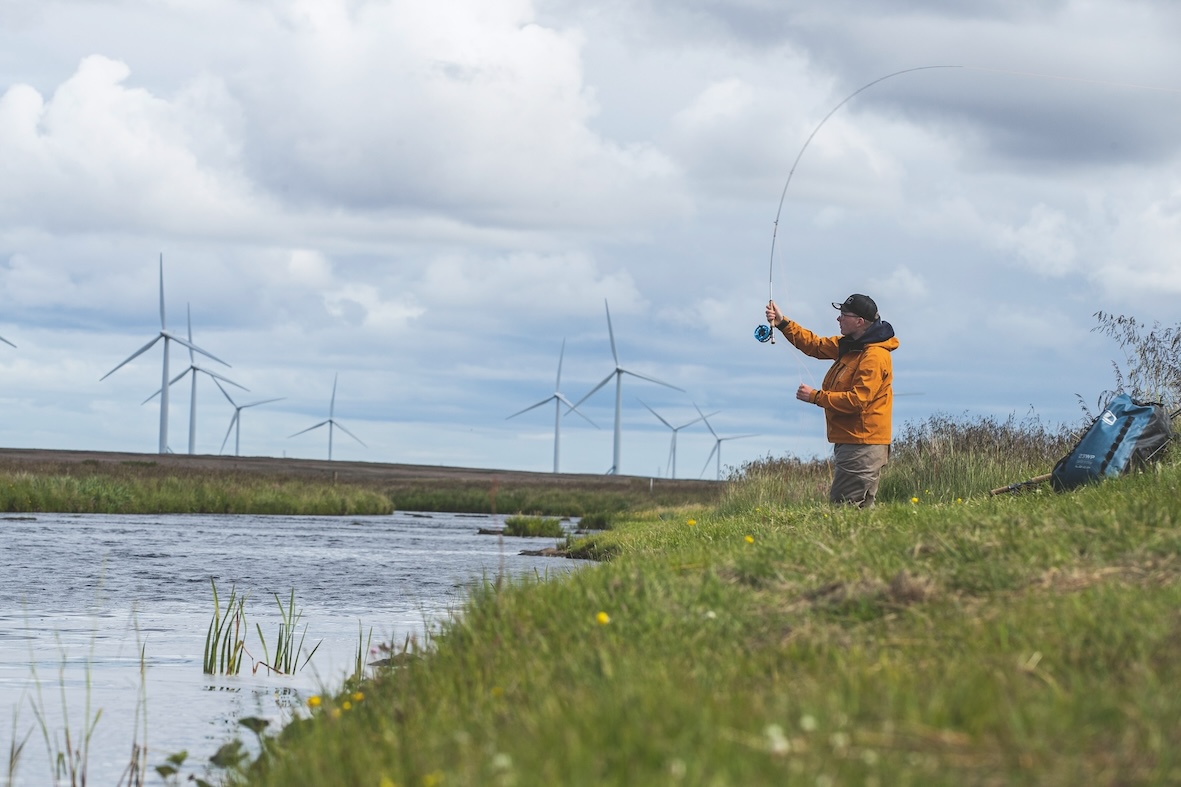
Beat 10 stretches 1.5 miles, with the gorge at the top—a series of short, fast pools practically begging for a hitch fly. This attractive stretch of water reminded me of fishing in Iceland. The grilse appeared in the pool tails, requiring stealth to avoid spooking them. The hut on Beat 10 is located at Cruives Eye pool, where large fish are often caught as they wait for a spate to pass through the narrow gorge. I recommend bringing a midge net, as the bugs in this sheltered canyon can be relentless when there’s no breeze to keep them at bay.
Silver Abundance
The Thurso is one of Scotland’s most prolific salmon rivers, enjoying a long and productive season. It’s not strictly classified as a spring or summer river because it receives strong runs throughout the year. Spring fish arrive as early as February, with runs peaking from April into May, offering the chance to catch large multi-sea-winter salmon. From mid-June until August, large shoals of grilse appear, and if you’re fortunate enough to experience a summer spate, as we did, the fishing can be phenomenal.
Beginning the week with an 18-inch rise in the river, our timing couldn’t have been better. Sharing two rods, we consistently landed over ten fish a day. The catches included lively grilse fresh off the tide, as well as fresh summer salmon ranging from 7lb to 16lb. Explosive takes and brutal fights on light tackle made for an experience we will never forget.
Endless Skies
The river meanders through the rugged Flow Country, often referred to as the Land of the Long View. Here, the skies seem endless, stretching over a landscape of cotton grass, blanket bog, and grassland. The wetlands are alive with sundews and sphagnum moss. Red deer and pine marten roam the area, and birdwatchers will be in for a treat: it’s not uncommon to spot golden and sea eagles soaring over Loch Mor, so be sure to bring binoculars. The wind farms, initially jarring against the natural landscape, slowly grew on me as the week went on. As evening light bathed the turbines and showers passed through, they seemed to change in both colour and mood, adding a unique touch to the sweeping views.
Hitching and Droppers
As the week progressed and river levels began to drop, the fishing became more intricate. We switched to single-handers and switch rods to ensure a delicate presentation. With the water lower, the lies became more defined, and we employed some of our favourite techniques: hitch flies, Muddlers, small Sunrays, and Bombers.
I often fished with a dropper, typically a hitch or Muddler, positioned about 6 feet above the point fly on a 14-foot leader. If the flow was strong, a figure-of-eight retrieve or a fast twitch with a high rod tip kept the riffle just right. However, in slower flows, it was trickier to keep the hitch fly on the surface. This is when the Muddler really came into its own, with its spun deer-hair made the Muddler an ideal fly, creating a perfect wake when stripped across the water. Both hitch flies and Muddlers provided highly visual and thrilling takes. On the point, small doubles worked wonders: size 12 Park and Calvin Shrimps performed beautifully in a nice flow, while Silver Stoats and Executioners were effective in slower water.
The Middle River: A Fish Sanctuary
The slow, canal-like sections of the middle river act as a natural larder, maintaining depth and offering sanctuary to fish when the water is low. These pools require specific conditions for optimal fishing. A fresh spate can add flow, but even in low-water conditions, a strong wind on an overcast day creates a ripple, oxygenating the water and waking the fish—similar to what anglers in the Hebrides would recognize. The rolling upstream ripple allows you to pull your flies across the wave, creating exciting, visual takes. When the sun shines and the water becomes calm, locals often use small micro-conehead flies, fishing them a bit deeper to work through the pools effectively.
Mastering the Art of Backing-Up
Backing-up is a technique that is synonymous with the Thurso, and it can be especially effective in the slower pools. Duncan taught me this method on Hoy pool on Beat 4. He started by casting a small conehead Park Shrimp squarely across the current from the bottom of the pool. Taking three large paces upstream, he created a nice bow in the fly-line before pausing briefly, allowing the fly to sink and the current to grab the line. He then retrieved the fly with long, slow strips, which allowed it to swim naturally across the pool.
Unlike the traditional down-and-across method—where the fish can see the fly from a distance, removing the element of surprise—backing-up keeps the fly hidden until it’s directly over the fish, prompting an aggressive reaction. As I watched Duncan expertly fish the pool, it wasn’t long before his line was ripped from his hand by a large, fresh fish. The fight was intense and seemed to last forever, but when it was over, we were left marveling at 16 pounds of sea-liced muscle gleaming in the net.
Related Articles
Get the latest news delivered direct to your door
Subscribe to Fieldsports Journal
Elevate your experience in the field with a subscription to Fieldsports Journal, the premium publication for passionate country sports enthusiasts. This bi-monthly journal delivers unparalleled coverage of game shooting, fishing and big game across the UK and beyond.
Each issue offers a stunning collection of in-depth features, expert opinions and world-class photography, all presented in a timeless yet contemporary design.
Save 10% on shop price when you subscribe, with a choice of packages that work for you. Choose from Print & Digital or Digital only with each journal delivered directly to your door or via the app every other month, plus access to past issues with the digital back issue library.







